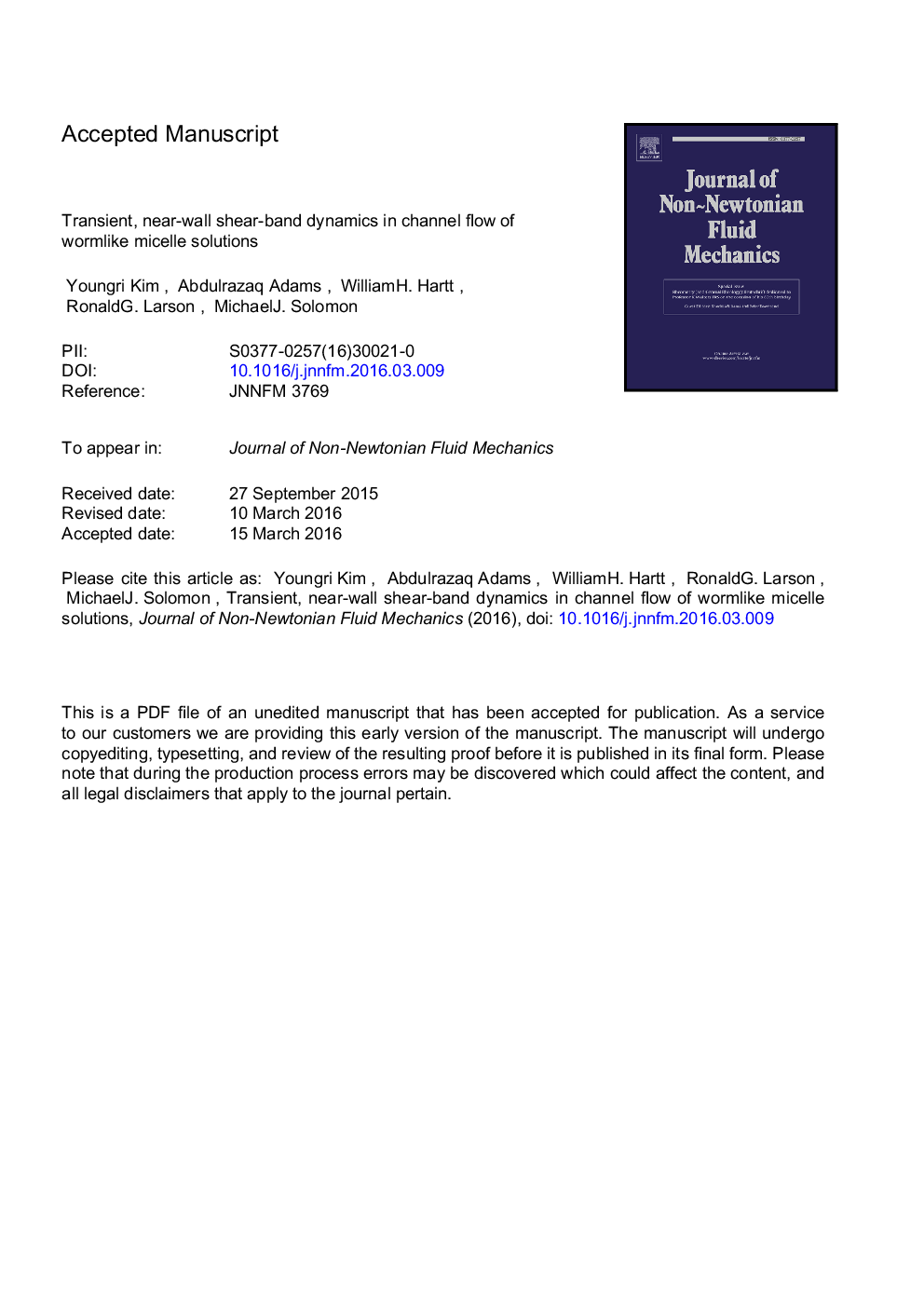| Article ID | Journal | Published Year | Pages | File Type |
|---|---|---|---|---|
| 670420 | Journal of Non-Newtonian Fluid Mechanics | 2016 | 36 Pages |
Abstract
We report the spatiotemporal dynamics of shear bands in wormlike micelle solutions as generated in the near-wall region of rectangular channel flow. In this system, a very thin (<2 µm) high shear rate band is generated, stacked along the gradient axis of the channel flow. By means of confocal microscopy and particle image velocimetry, we observe the effect of this thin band on both the steady-state flow profile and the transient variation in the flow-direction velocity, which is found to be non-uniform in the vorticity direction. The steady-state velocity profiles deviate from a parabolic shape above an applied wall shear rate of 6 sâ1 (Wi = 0.8), in good correspondence with the measured rheology. Kinetically, the deviation from parabolic flow presents as the development of a thin, near-wall band flowing at a high shear rate. The band dynamics along the vorticity (neutral) axis of the flow are observed at distances from 2 to 10 µm from the wall. At the smallest near-wall position of 2 µm, space-time plots reveal four distinct stages in the variation of the flow-direction velocity with time and with position along the vorticity axis. First, the flow accelerates at all points along the vorticity axis to about one-half of the final, steady-state velocity at that position in the gap. Second, a deceleration - again at all points in the flow-vorticity plane - abruptly slows down the fluid motion at this near-wall region. The total change in velocity resulting from the deceleration is about one-half that of the previous acceleration. Third, the flow partitions into multiple strips along the vorticity direction; these strips have non-uniform flow-direction velocity. The width of these strips is dependent on the wall shear rate; their width is â¼100 µm for flow with a wall shear rate of 8.4 sâ1. Finally, all the fast strips combine to form a single homogeneous flow with a fast velocity at 2 µm from the wall. This velocity is â¼50 times that expected for unbanded flow with the same flow rate. We discuss these shear band spatiotemporal dynamics in the context of transient vorticity structuring that occurs at applied wall shear rates within the stress plateau region.
Related Topics
Physical Sciences and Engineering
Chemical Engineering
Fluid Flow and Transfer Processes
Authors
Youngri Kim, Abdulrazaq Adams, William H. Hartt, Ronald G. Larson, Michael J. Solomon,
